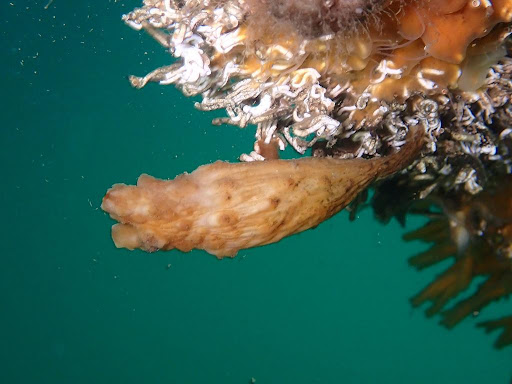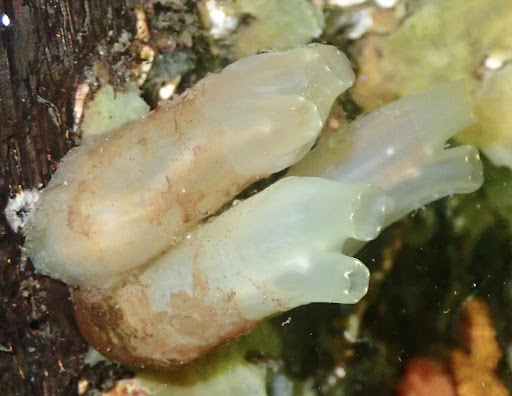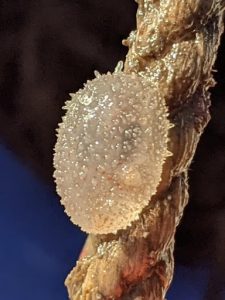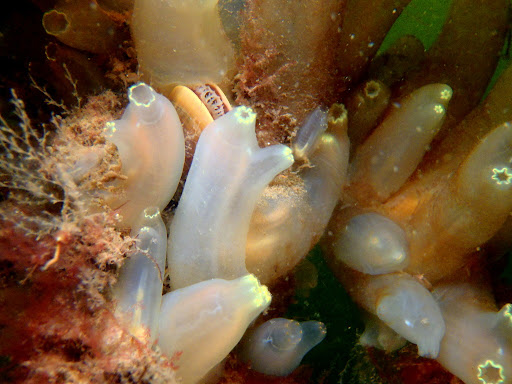Solitary Tunicates are small marine filter-feeding animals, sometimes referred to as sea squirts. They look somewhat like fingers, or cylinders with two siphons at the top. They have thick, muscular skin that looks like a tunic, and can retract or close their siphons when disturbed. Solitary Tunicates develop individually, but can form dense aggregations.
Solitary Tunicates are very hardy, and can tolerate a wide range of water temperatures and salinities. They prefer sheltered bays, and like Colonial Tunicates, attach themselves to rocks, seaweeds, Eelgrass, and other native species, or on man-made structures such as ropes, docks, boat hulls, and shellfish culture gear. They alter natural marine ecosystems by outcompeting native species for food and space. They also threaten coastal and offshore fishing and aquaculture activities by fouling aquaculture species and gear.
Styela clava
Description: Native to the Western Pacific Ocean. Grows up to 18 cm in size – the stalk anchoring it to the substrate makes up one third of its body length. Body is firm, with little wrinkles and bumps. Overall leathery texture.
Pathway: Present on the South Shore of Nova Scotia. Most likely introduced by commercial shipping.

Ciona intestinalis
Description: Native to Northern Europe. Up to 15 cm long, cylindrical, without a stalk, translucent, smooth, and varying in colour from light greenish-yellow to orange or pink. Can form dense groups of individuals.
Pathway: Present in the Bay of Fundy since the 1850s, abundant since the mid-1990s. Pathway not definitively known.

Ascidiella aspersa
Description: Native to the Mediterranean Sea and throughout Europe. Reaches up to 5 cm in length. Egg-shaped with a firm and bumpy surface. Translucent, but color is grey with a pinkish hue.
Pathway: First detected in Nova Scotia in 2012 on the South Shore. Most likely introduced through ballast water fouling.


If boating or fishing in Tunicate-infested waters, keep your boat hull and gear clean to avoid accidentally transporting tunicates to new locations. Avoid transporting infested shellfish or water that may contain tiny bits of Tunicate, to prevent accidental introductions into unaffected or less-affected areas. If you spot this invasive species, report the location to iNaturalist, or directly to the NSISC.
Join our mailing list.